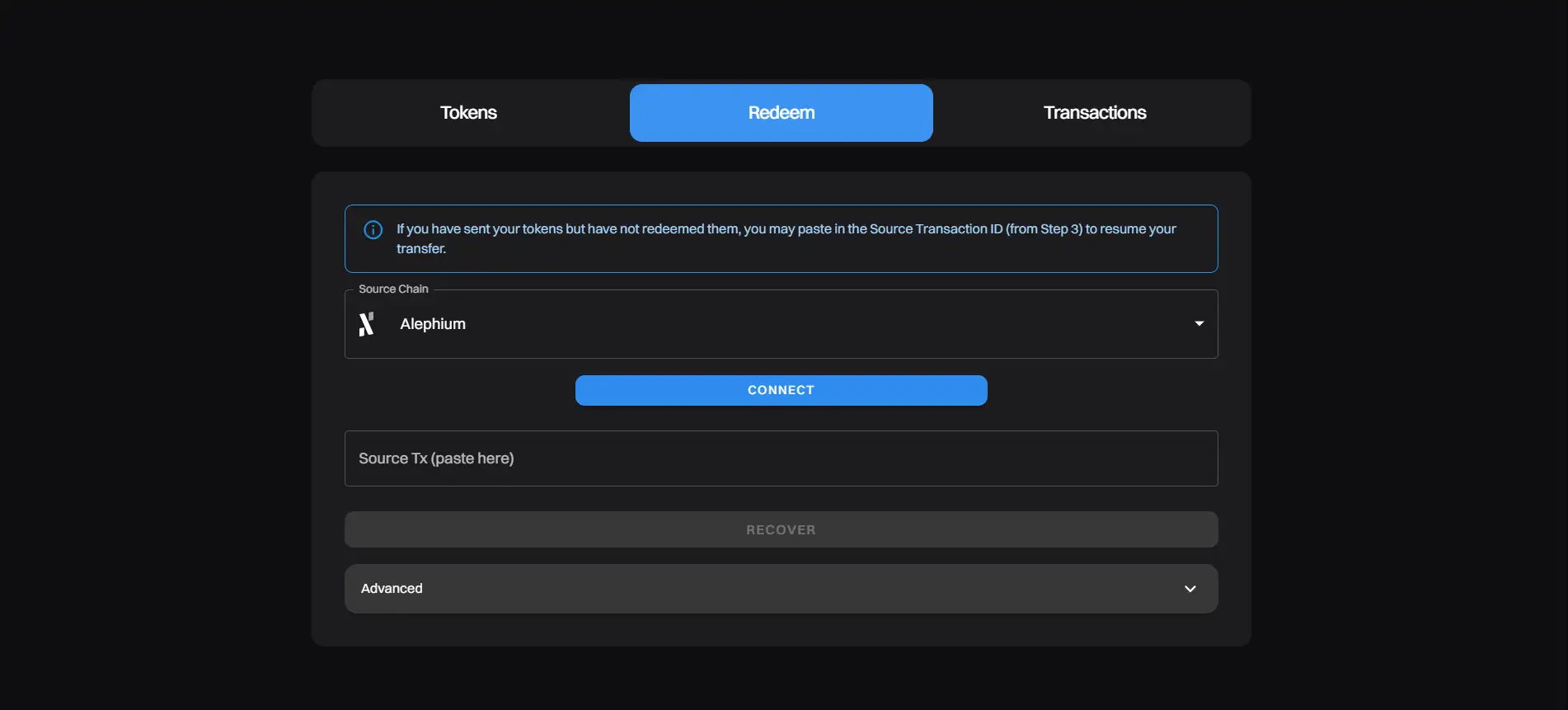About Alephium Bridge
Alephium is an innovative blockchain platform designed to tackle the challenges of scalability, energy efficiency, and decentralization in the blockchain industry. Unlike traditional blockchain architectures, Alephium utilizes its proprietary BlockFlow sharding technology and a stateful UTXO model to achieve high throughput and secure smart contract functionality. This approach makes Alephium a versatile and efficient platform for building decentralized applications (dApps) while maintaining the security and decentralization principles of blockchain technology. Learn more on the Alephium website.
With a commitment to sustainability, Alephium introduces the novel Proof of Less Work (PoLW) consensus mechanism, which significantly reduces the energy consumption required for mining. This eco-conscious model ensures that the network remains secure while consuming a fraction of the energy compared to Bitcoin or Ethereum. By seamlessly integrating scalability, decentralization, and sustainability, Alephium sets a new standard for blockchain platforms and positions itself as a critical player in the future of decentralized technology.
Alephium was built to address the core limitations of existing blockchain networks, such as scalability bottlenecks, high energy consumption, and limited programmability. Using its proprietary BlockFlow sharding algorithm, Alephium achieves high throughput by splitting the network into independent shards, each capable of processing transactions. This mechanism enables Alephium to support over 400 transactions per second (TPS), vastly outperforming Bitcoin's capacity of just 7 TPS. By ensuring scalability without compromising on decentralization or security, Alephium has established itself as a robust and efficient blockchain platform.
Another defining feature of Alephium is its stateful UTXO model, which combines the security advantages of Bitcoin’s UTXO architecture with the programmability of Ethereum's account-based model. This hybrid design supports mutable states for smart contracts, enabling the development of feature-rich decentralized applications. Additionally, Alephium's custom-built virtual machine, Alphred, addresses key issues in traditional smart contract platforms by ensuring enhanced security and providing developers with an improved programming experience.
From an environmental perspective, Alephium is a pioneer with its Proof of Less Work (PoLW) consensus. Unlike traditional Proof of Work (PoW) models, PoLW dynamically adjusts the computational work required for mining, reducing the platform's energy consumption to only one-eighth of Bitcoin's under comparable network conditions. This eco-friendly mechanism aligns with global sustainability goals, making Alephium an attractive choice for environmentally conscious developers and users.
Since launching its mainnet on November 8, 2021, Alephium has achieved several notable milestones. The release of its desktop wallet, the Leman Network Upgrade, and the development of a browser extension wallet are among the significant steps taken to expand its ecosystem. These tools provide users and developers with comprehensive resources to interact with the Alephium platform, further solidifying its position in the blockchain industry.
In comparison to platforms like Ethereum, which prioritizes smart contract programmability, and Polkadot, known for its interoperable parachains, Alephium focuses on combining scalability, decentralization, and energy efficiency. By offering an all-in-one solution, Alephium stands out as a next-generation blockchain platform with unique innovations and practical solutions.
Alephium provides several key benefits and features that make it a leading blockchain platform:
- Scalability: Using its BlockFlow sharding mechanism, Alephium achieves high throughput, supporting over 400 TPS while maintaining decentralization.
- Energy Efficiency: The Proof of Less Work (PoLW) consensus model reduces energy consumption by up to 87% compared to Bitcoin.
- Stateful UTXO Model: Combines Bitcoin's UTXO security with Ethereum’s programmability, allowing for secure and versatile smart contracts.
- Developer-Friendly Tools: The custom Alphred virtual machine ensures a seamless experience for developers with robust security features.
- Ecosystem Support: Desktop wallets, browser extensions, and blockchain explorers are readily available to enhance user interaction.
To get started with Alephium, follow these steps:
- Visit the Alephium website and download the official desktop wallet for your operating system.
- Install the wallet and generate a new wallet address. Ensure you back up your seed phrase securely.
- Explore the Alephium Bridge to convert tokens from other blockchains into Alephium-compatible tokens.
- Start exploring decentralized applications or participate in network governance using your wallet.
- Developers can access comprehensive documentation from the Alephium Docs to start building on the platform.
For further guidance, check out the resources available on the Alephium website.
Alephium Bridge FAQ
Alephium’s BlockFlow technology is a groundbreaking sharding algorithm that enhances scalability by splitting the network into independent shards. Each shard processes transactions separately, allowing the network to achieve over 400 transactions per second (TPS). Unlike traditional sharding methods, Alephium ensures decentralization and security without sacrificing efficiency.
Alephium introduces the innovative Proof of Less Work (PoLW) consensus mechanism, which dynamically reduces the computational work required for mining. This approach lowers energy consumption to one-eighth of Bitcoin’s energy usage under similar conditions, making Alephium an eco-friendly blockchain solution.
The stateful UTXO model combines the security benefits of Bitcoin's UTXO architecture with Ethereum’s programmability. This hybrid approach enables the development of secure and complex decentralized applications (dApps). By using the stateful UTXO model, Alephium ensures robust security and flexibility for smart contracts.
Developers can begin by exploring the comprehensive Alephium documentation, which includes tutorials, API references, and guides for using its custom Alphred virtual machine. They can also access tools like the desktop wallet and browser extension to test their applications within the Alephium ecosystem.
You Might Also Like












